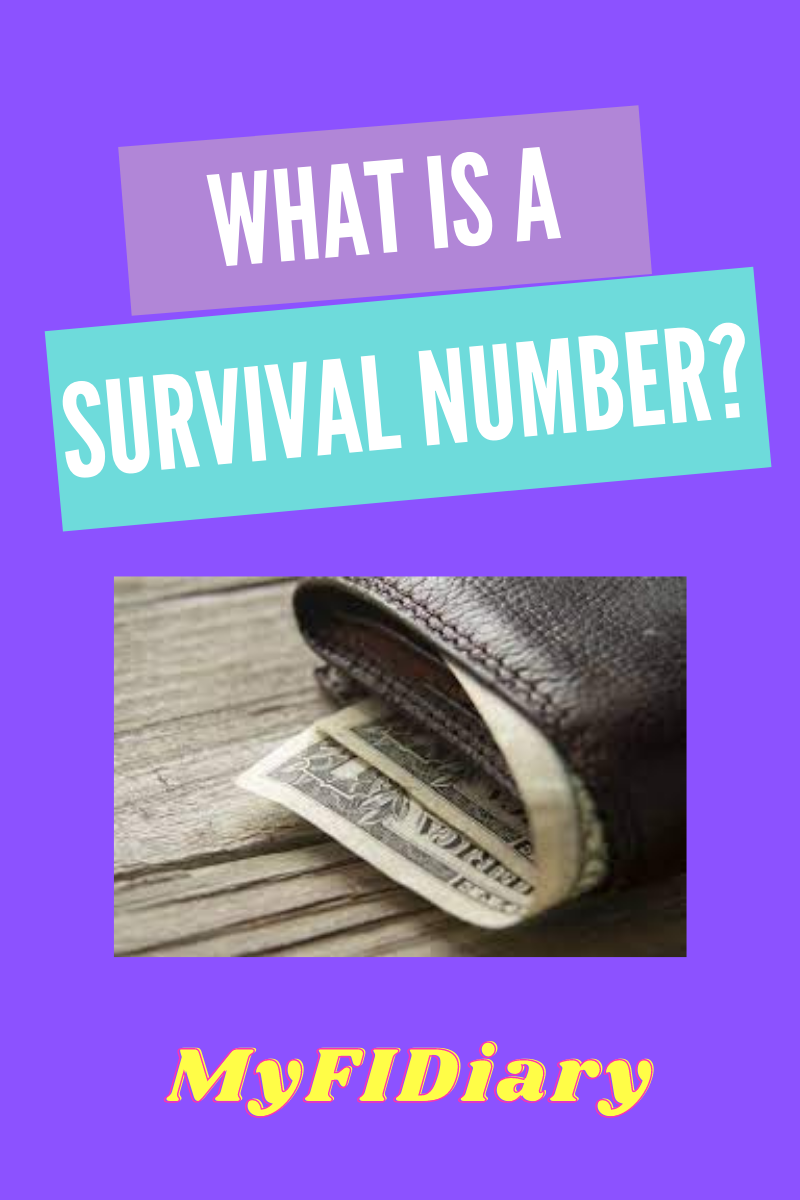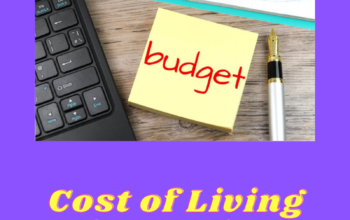What is a Survival Number?
After 2020, more people had to figure out the bare minimum amount of money that they needed in order to survive. When you get laid off, have a sudden drop in your hours, and are unsure about your job security it is imperative to spend as little as possible. Last year, I came across a few financial educators and bloggers such as the Investing Latina that talk about what a ‘survival number’ is and how to calculate it for yourself. I thought it would be a great exercise for me and a little fun to find out what my survival number is.
A survival number is essential the minimum amount of money that you need to ‘survive’ without any thrills. It’s okay to add some perks to help you not go crazy, but it includes only the essentials. What are the essentials you might ask? According to the Investing Latina, there are eight categories to include within your survival number: rent + utilities, groceries, dining out, transportation, household items, health, clothing, and entertainment. She describes the last two being optional and if you are really down to the wire, eliminating them all together. Let’s dig into what my survival number would be category by category.
Rent + Utilities
This first category is my largest expense. I live in the San Francisco Bay Area (for now) and it’s no secret that there are housing issues that have caused the supply to be low and prices to be high. If my husband and I minimally used electricity and were more conservative with water, my survival number for this category would come to about $1,400. Our rent payment is fixed and we could probably be more conservative with our utilities but I wouldn’t want to get to the point of being umcomfortable.
Groceries
This is probably an area where we have the most flexibility. I normally spend anywhere from $300-400 each month on groceries. This includes buying lots of fruits and vegetables, meats, rice, and any snacks that I want to occasionally indulge in. For my survival budget, I would cut down to just meat, produce, and rice. I would eat healthily, but cut out any additional snacks that aren’t a necessity. I’m guessing that I could get this number down to about $200 per month if I only shopped the grocery store brand, stuck to the same few meals that could be cooked in batches, and only drank water.
Dining Out
This category isn’t essential for me. I could easily cut it out, but if I’m being realistic, I’d say that ordering pizza for one day out of the month as a ‘treat’ wouldn’t be a bad idea. Ordering the pizza and picking it up instead of getting it delivered takes out the cost of delivery and a tip. I’d allocate about $20 to this category.
Transportation
For the past year, I’ve been working remotely from home which I am extremely thankful for. That means that I don’t have to commute to an office. Although I do have a paid-off car, a 2008 Lexus SUV, I rarely drive it. My husband pays our car insurance and I only put about $20 of gas into the car every month or every two months. I use it to go to Doctors’ appointments, grocery shopping, and the library which are all within a 5-minute drive of our apartment.
Household Items
I admit that sometimes I can get carried away on Amazon buying household items. It can start with something simple like buying more hand soap, and snowball into buying multiple items. I’m trying to be more conscious of this now. I have a bidet attachment on my toilet that cuts down on the need for toilet tissue. We use a hand soap that can be bought in bulk, a cleaning spray that can be bought concentrated, and be diluted, and we try to use our paper towels sparingly if at all. Based on just buying the essentials, we could get by at about $33 per month.
Health
This one varies month to month. My employer pays almost 100% my insurance because I’ve chosen a more expensive plan in preparation for having an operation this year. I pay about $30 extra each month. I’ve been seeing the Doctor at least once per month as well which has a $30 co-pay. So for this category, I would be paying $60.
Clothing
I’m not big on fashion or wearing the best brands. I believe in buying items that are comfortable, high quality, and will last a long time. However, I tend to wear the same clothes over and over again (especially company t-shirts) and if I’m simply surviving, I won’t be buying any new clothing at all. I have enough clothes to not have to buy anything new at all so I’ll be allocating $0 to this budget.
Entertainment
Entertainment is a part of living a healthy life. Even if you are spending as little as possible, to stay sane it’s important to find some ways to entertain yourself and step away from the pressures of life. A big thing for me is to take advantage of my local library to read books which is absolutely free. I am on a Spotify family plan that my husband pays for which allows me to listen to music and stay up to date with my favorite podcasts. I also pay about $12.99 per month for Netflix. So for me, this category would only cost me $12.99.
…and the grand total is $1745.99! Whoa, this isn’t too bad at all. Also, this is living in the San Francisco Bay Area! If my husband and I ever move (which we plan on doing sometime soonish) then my housing costs would be slashed in half and my survival number would be hovering around only $1,000. I would still be living a comfortable, good quality life. Now, granted, I have a husband who I share expenses with which I’m aware of. But still, it’s comforting to know that I can get by on less than $2,000 per month.
I had fun figuring out my survival number, and it’s a good baseline for me to predict my LeanFIRE number, which is the amount of savings and investments that I’d need to be able to cover my basic expenses. At this current point and time, based on my survival number of $1745.99, my LeanFIRE number would be $523,797.
Have you calculated your survival number? If so, share below what yours is. Thanks for reading!

